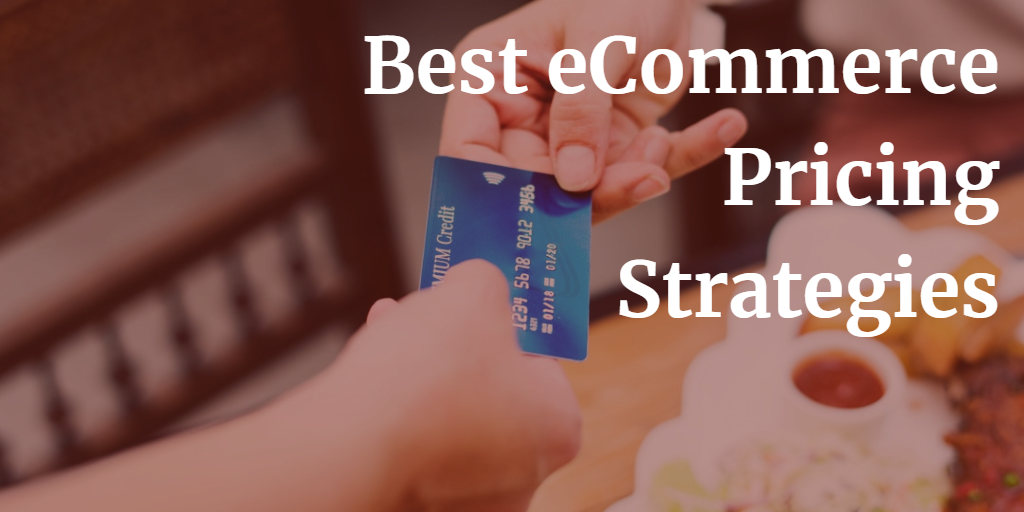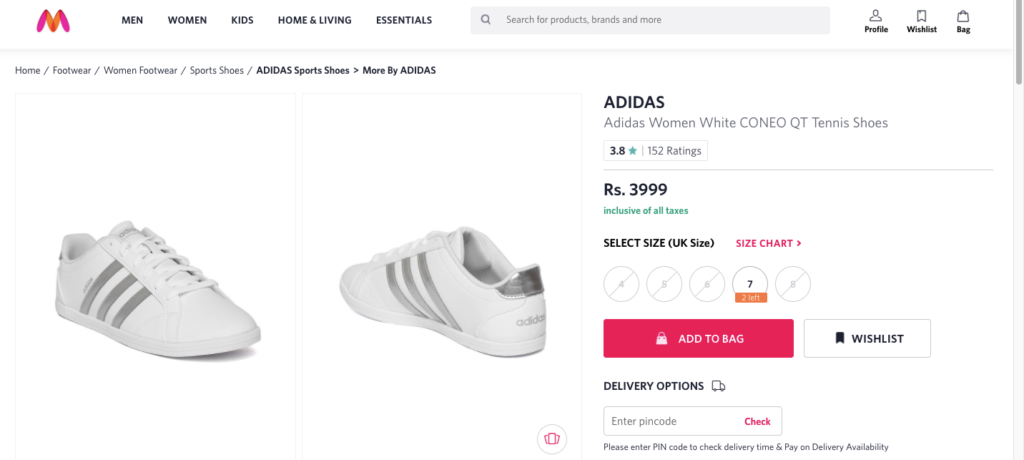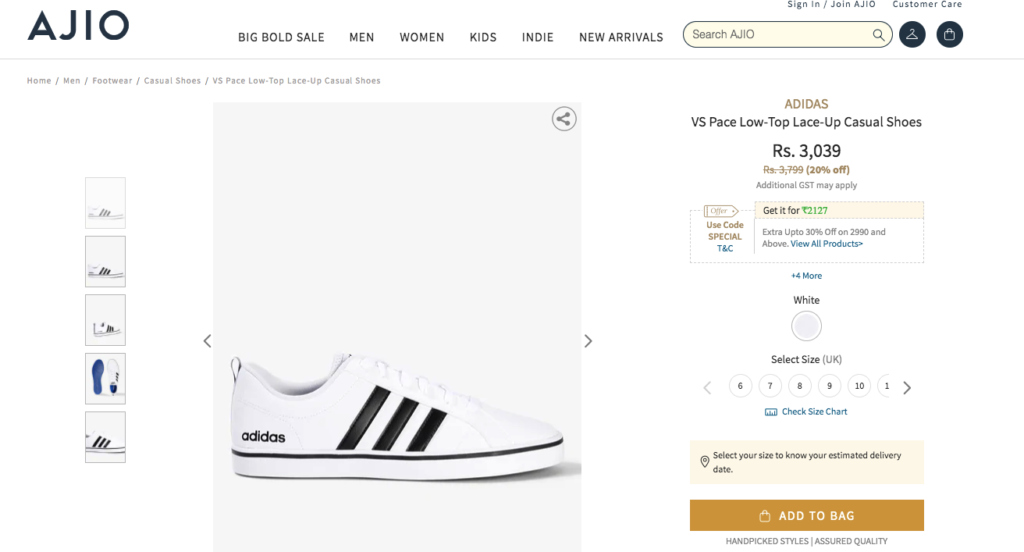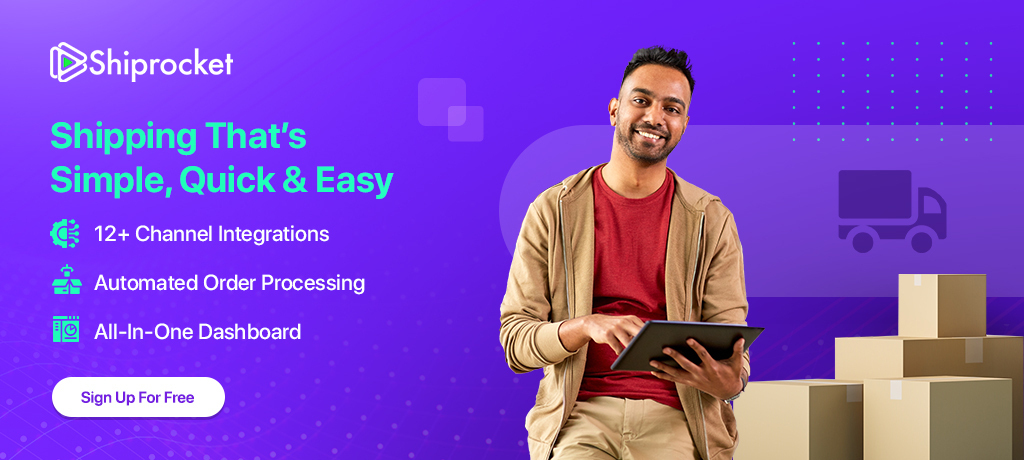12 Best eCommerce Pricing Strategies for Business Growth
Like any other business, the main motive of an eCommerce business is to maximize profits through maximum reach and reception. While from the customer’s point of view; the main motive is to get the best products at affordable rates. This is where an effective pricing strategy comes into play.
Maintaining the pricing of products and services is one of the most interesting yet challenging processes in an online business. If the pricing strategy is correct and falls in place, it can pave a path for omnichannel success. Following are some of the most effective pricing strategies that can be implemented in eCommerce.

12 Most Effective eCommerce Pricing Strategies
Cost-based pricing
In this mode of pricing, the retailer mainly sets prices without doing much research about consumer behavior or the demand-supply chain. The process is quite simple in approach and ensures minimum return of the products that are being sold. In most cases, the retailer adds some extra markup on the cost price and creates a profit.
For example, If you are manufacturing a pair of shoes at an overall cost of Rs. 700 and want to keep a 20% profit margin, you will sell the shoes at a cost of Rs. 840. This is precisely what is cost-based pricing.
This model of pricing strategy works well for small and medium businesses that cater to a local target audience.
Factors affecting the cost-based pricing strategy include capacity, material cost, overhead expenses, shipping costs, and labor costs. Shipping costs are a major contributor if you do not ship at reasonable prices.
Thus, tie-up with shipping solutions like Shiprocket to reduce your shipping costs and price your products in a more competitive manner. Since you get to ship at discounted rates with multiple courier partners, you can easily improve shipping and do much better.
Competitor-Based Pricing
In this pricing strategy, the retailer tries to set the price after doing a comparative analysis of the pricing of other competitors. According to the comparison, you can set the pricing of your products based on the pricing of your competitor.
Myntra and Ajio are two eCommerce stores that sell identical products like men’s and women’s apparel from similar categories and house a number of brands. They usually follow competitor based pricing and most of their product prices are very similar and have only a small marginal difference.


This pricing model is ideal for selling identical products in the market. However, one drawback of this form of pricing is misleading information, which may hinder the progress of your business.
Value-Based Pricing
This is one of the most effective pricing strategies applicable to eCommerce. This is mainly focused on the quality that you deliver to the customer so that the demand increases.
You thoroughly research deep into the industry segment, the product segment, consumer tastes, behaviors, and buying preferences and accordingly come up with the right price of the products.
Although value-based pricing requires in-depth market research and customer analysis, the returns and profits that you reap from them are wonderful.
Value-based pricing requires you to be extremely mindful of the pain point you are solving for your customers and then price your products accordingly. If you have many competitors in the market selling the same product, chances are customers won’t pay you the same price. Hence, it is important to assess the value of your products and your customer’s demand if you want to be successful with this type of product pricing strategy.
As you go on in the business, you make subtle changes to the prices to match the tastes, preferences, and budget of the target audience. According to the demand and supply chain, your pricing will also vary.
Let’s consider the calculation for this eCommerce pricing strategy:
Suppose your cost and expenses for the product in question total Rs.500.
Now, find your average selling price with the competitor-based strategy. Let’s say it’s Rs.1000.
So, your profit here is Rs.1000 – Rs.500 = Rs.500
If you provide a value-added feature to your customers that they might not get at other stores, like t-shirts made from high-quality and extra comfortable fabric, consider adding a premium to the average selling price.
ie; Rs.1000 + Rs.200 = Rs.1200
As a result, your profit jumps up from Rs.500 to Rs.700 on every sale.
Dynamic Pricing
The dynamic pricing strategy is a flexible one and the prices derived using this eCommerce pricing strategy can alter depending on the demand and supply in the market.
A company has the opportunity to increase or decrease its product price considering the dearth of competition and the flow of goods in the market. The price is inversely proportional to the competition, i.e., if you’re a new business setting foot in the market, you can decrease your selling price to beat your competition and lure more potential customers. Another valid reason to lower your prices may be to quickly sell piled-up dead stock that could expire, go out of fashion, or perish.
Whereas, if you’re among the few businesses selling a high-demand product, then you have the privilege to sell it at a higher price. However, you must have one eye on your competitor’s pricing to successfully employ this eCommerce pricing strategy. The eCommerce businesses that have ample time and resources to stay abreast of their rival’s pricing, market demand, and same niche suppliers, benefit the most from this pricing model.
Bundle Pricing
Is your business in a saturated or highly competitive niche? If so, the bundle pricing strategy may prove to be a boon. This strategy focuses on bundling or grouping complementary products and selling these items at a lower price. Putting such goods together increases the overall value of the order and helps you sell multiple products in one transaction.
This eCommerce pricing strategy suits businesses facing cut-throat competition. It helps attract more customers to their online stores and get higher sales.
The best way to bundle your products is by identifying your bestsellers and pairing them with less popular or low-priced products to make a bundle. For example, let’s say a body lotion priced at Rs.800 is your hot-selling item. In contrast, a face scrub worth Rs.500 and a Rs.400 face wash are two low-selling products. Now, if a customer purchases them separately, then the total would be Rs.1,700. But if you create a combo pack of these items and sell it at nearly 20% less, for Rs.1,360, your customers will gladly grab the deal and buy the pack.
It’s a tactic that delights your consumer in getting more by paying less. The technique also works wonders when you need to clear out extra stock.
Loss Leader Pricing
Many businesses trick their customers into thinking that they’re almost at a loss for selling their products at exceptionally low prices. It gives the impression that your business is barely even covering its costs or expenses.
If your business sells goods with add-ons, this eCommerce pricing strategy may be perfect for you. Following this pricing model, you price your main product at a meager rate and use it as bait to draw in customers to explore your website and buy more products. For example, a company might sell the gaming console at Rs.20,500, a price close to or lower than its production cost. The lucrative pricing attracts many gamers to purchase the console, but the real profit for the business comes from subsequent purchases. The gamers who now own the console will need to buy games, accessories, or subscriptions for online services, which come at a price with higher margins. Let’s say each video game costs around Rs.4,920, and a yearly subscription service for online play might be Rs.4,100. So, in this case, the additional purchases are actually where the company makes its real profits, as customers are likely to buy multiple games and continue renewing their subscriptions.
Price Skimming
The idea of making your products appear scarce or special, like a limited edition or an exclusive offer, is price skimming. This eCommerce pricing strategy is like a psychological trick that makes the customer crave such products and creates a state of emergency in the customer’s mind to purchase them. Price skimming acts as a catalyst for impulsive buying and quick conversions.
If you want your customers to rush into purchasing specific products, you must use this pricing technique. Businesses usually showcase their most expensive items as limited or special edition products to steer their customer’s attention in the direction of those products. For example, many high-end or luxury brands like Louis Vuitton, Gucci, Versace, Jimmy Choo, and more often play this card. Customers mostly feel that the limited-edition collection will be gone soon, and they’ll miss the chance to have something unique. They even end up paying higher prices for such products.
One alternative way of creating urgency in your customers to buy your product is by slashing the price of your product for a short or specific period, like offering a 20% discount for the next 48 hours. The limited-period offer compels the customer to make the purchase in that time frame for encashing a smart buy.
Anchor pricing
Businesses give buyers an anchor or a reference price point using this eCommerce pricing strategy. For example, you may slash the original price and display it next to the discounted price during an ongoing sale or offer on your website. An eCommerce store can show the product price as Rs.1,999 against Rs.2,499 to attract customers by letting them know at a glance how much money they’re saving. Your product’s original price may be Rs.1,999, but by showing this difference or anchor price, you create a sense of urgency in the customer’s mind. Customers will feel the instant urge to buy the product to avoid missing out on the enticing deal.
Businesses usually use anchor pricing for subscription or bundle orders by displaying the cost savings a consumer gets on buying more or subscribing to the product, in comparison to buying once or making a single purchase.
Odd Pricing
Odd Pricing is quite a popular eCommerce pricing strategy. It’s one of the most effective ways to offer competent prices on your eCommerce product range. The hack behind this psychological pricing trick is that a customer almost always notices the left-hand side digit while looking at the price. A product costing Rs.599 appears cheaper compared to a product priced as a round figure of Rs.600. Although the difference in the amount is almost negligible, the buyer prefers the first product because number 5 is less than 6.
Use odd pricing to encourage your customers to buy more from your website or store. For instance, if you’ve priced an item at Rs.400, change the number to Rs.399 and see the magic. It will make your customers feel that you’ve got a reasonably priced product.
Break-Even Prices
The break-even pricing model is perfect for businesses wanting to clear their stock before it expires, turns obsolete, or perishes. At this stage, you want to cover your expenses or costs even if you lose on profit margins. It’s like an emergency where you have to save your business from gathering additional costs of dead stock or bear any potential losses.
This eCommerce pricing strategy involves selling your products at a price that includes the cost of acquiring or making the product and other expenses.
Geographic Pricing
Geographic pricing is where you need to consider the country in which you’re selling your products. If your eCommerce store deals in international sales, it’s difficult to maintain the same selling price for all the locations. You must evaluate the freight charges, taxes, and customs duties to derive your actual product cost.
For instance, let’s take a company that manufactures luxury handbags, and is based in Italy but sells its products globally. The company sells a handbag to its Italian or local customers for a price of Rs.43,070, which includes the local Value Added Tax (VAT) but is free from large shipping costs or international duties.
However, this company sells the same handbag to US customers at a rate of Rs.53,599 (USD 650). The difference in the price is the result of adjustments like additional shipping costs from Italy to the United States, customs duties imposed by the U.S. government, and exchange rate variations.
This company is using geographical pricing here, which allows it to cover all additional logistical costs and set its prices according to the purchasing power and market conditions of specific geographical locations. The firm also accounts for local competition and legal requirements such as taxes and tariffs.
Combining eCommerce Pricing Strategies for Enhancing Business
It’s not necessary to implement one pricing strategy at a time; you can mix and match these eCommerce pricing strategies to suit your business needs. Combining these eCommerce pricing strategies helps you enhance your sales and profit margins.
For example, dynamic pricing works well in combination with competitor-based pricing to help you stay competent.
Using the loss-leader pricing and price skimming combo can increase your customers’ lifetime valuef in the long term as they’ll continue to buy multiple products from your eCommerce store when the product price comes down.
You can put value-based and competitive-based pricing together to justify the high prices of your products. You can bring attention to the unique features, use of high-quality materials, and more to make your customers believe that your products are worth the premium.
Final Thoughts
Choose the pricing model best suited for your business and slowly move to higher strategies. Pricing strategy is a key binding factor for your business growth, acquisition, and customer retention; make sure to choose one which maintains a balance between both.








Thanks for sharing. It is a really helpful guide!